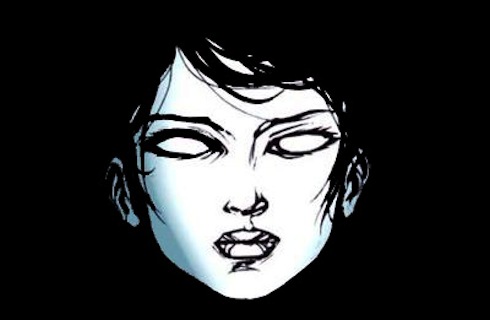“There was a desert wind blowing that night. It was one of those hot dry Santa Anas that come down through the mountain passes and curl your hair and make your nerves jump and your skin itch. On nights like that every booze party ends in a fight. Meek little wives feel the edge of the carving knife and study their husbands’ necks. Anything can happen. You can even get a full glass of beer at a cocktail lounge.” —Raymond Chandler, “Red Wind.”
“The sky above the port was the color of television, tuned to a dead channel.” —William Gibson, Neuromancer
The link between film noir (and its literary antecedent) and cyberpunk is not a revelation. The influence has been noted by countless critics, as well as cyberpunk authors themselves, most frequently that which Raymond Chandler had on William Gibson. Chandler, who came to writing late, not publishing his first short story until he was in his mid-40s, wrote boldly and flamboyantly. His protagonists were men embittered by the injustices of the American system, but resigned to working either within or parallel to it. As an older man, and one whose writing career began due to his previous one ending in the Great Depression, Chandler had earned his cynical world-weariness, something very few of his imitators could say, and quite simply no one could ever write prose like Raymond Chandler.
His ear for dialogue was pitch-perfect, his descriptive abilities wonderfully over the top and frequently quite funny, and both of these overshadowed his—to be kind—narrative shortcomings. His most famous protagonist, Philip Marlowe, is not remembered for his deductive abilities (very often the mystery either solved itself or was virtually handed to Marlowe on a silver platter) but for his loyalty to friends, his resolute willingness to take a night in jail rather than betray his sense of ethics, and of course his glorious way with words.
That is the most noticeable link between Chandler and Gibson, as the above quotes from each attest. Secondary to that, only barely, is the total familiarity each writer had with the feeling of being outside mainstream society. Where Chandler lost his job in the Depression, Gibson came of age in the 1960s, as one of many young people in that generation who felt little to no connection to “normal” people, drifting from place to place, identifying with the counterculture and, all too often, with the drug culture (experience which Gibson chronicles vividly in his novels).
Though outwardly quite different as people, as writers, Chandler and Gibson have quite a bit in common. The post-war southern California of Chandler’s later years prefigured Gibson’s Sprawl, but Chandler could never—and may not have been able to permit himself to—envision things going that far. Chandler may have been one of the most important progenitors of noir, but the future is a far darker thing than anyone can see.
“A blonde to make a bishop kick a hole in a stained glass window” —Raymond Chandler, Farewell My Lovely
“The Gothick girl regarded Bobby with mild interest but no flash of human recognition whatever, as though she were seeing an ad for a product she’d heard of but had no intention of buying.” —William Gibson, Count Zero
There is, of course, no noir without a femme fatale. Objectified, feared, always regarded as the Other, the femme fatale is an interesting figure because while always a mysterious object of desire, she was invariably quite powerful, often times even more so than the ostensibly rough-and-tough hero. Even if on a certain level the femme fatale is a manifestation of male writers’ Freudian fears of emasculation or some such in intent, the end result is—moral and ethical baggage aside—a portrait of beauty and power and beauty as power.
In cyberpunk, the femmes fatales are more literally deadly. The template, like so many tropes of the genre, was established in Neuromancer with Molly, Steppin’ Razor herself. Although still mysterious, emotionally guarded (though frequently willing to sleep with the protagonist), and capable of killing lots of people, the cyberpunk variation on the femme fatale is more likely to kill bad guys than she is the protagonist. She’s still just as fascinating a presence as her more demurely dressed forebears, every bit as likely to spark debate about whether she owes her entire existence to being a weird manifestation of the male gaze or whether she’s a genuinely empowering figure. But the razor girl and the femme fatale have one very important thing in common: they catch your attention.
“I never saw any of them again—except the cops. No way has yet been invented to say goodbye to them.” —Raymond Chandler, The Long Goodbye
“Somewhere very close, the laugh that wasn’t laughter. He never saw Molly again.” —William Gibson, Neuromancer
In the end, what noir and cyberpunk share is a simultaneous, paradoxical status as distinctly past-tense forms that nonetheless keep popping up everywhere in subsequent art. Cyberpunk is certainly one of noir’s most prominent descendants, and cyberpunk itself still has influence of its own. Fittingly, as each was widely criticized—and exalted—as valuing style over substance, the lasting impact of noir and cyberpunk (connecting the two as one entity, since there is no cyberpunk without noir) is greatest in the visual arts and cinema. For in the shadows lies danger and mystery. Sex and power. The simultaneous thrill and fear of confronting death. Noir, and all its descendants, including cyberpunk, is the shadow.
Danny Bowes is a playwright, filmmaker and blogger. He is also a contributor to nytheatre.com and Premiere.com.










